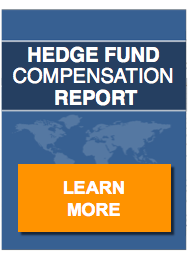Janet L. Yellen appeared February 24th before the Senate Committee on Banking, Housing, and Urban Affairs and again February 25th, 2015 before the House Committee on Financial Services, providing semi-annual testimony on monetary policy and the economy in her role as the U.S. Federal Reserve Chair.
What We Learned About Employment
The unemployment rate (U3) is falling, currently at 5.7%, down forty-three percent from 2009’s peak rate of 10%. However, the “U6” measure of unemployment, defined as the total of all unemployed workers, marginally attached workers and workers employed part-time but preferring full-time, has fallen less than twenty-five percent in the same period.
Concurrently, the employment-to-population ratio has been virtually flat, and the labor force participation rate continues to decline. Yellen’s Federal Open Market Committee (FOMC) report suggests the shrinking labor participation rate is largely attributable an aging population.
What We Learned About Growth
The FOMC report estimates that real GDP increased to an annual rate of 3.75 percent in the latter half of 2014. The report further states that this rate of growth is not expected to continue. Surprisingly, the report cites the federal government’s fiscal policies as contributing to the slow rate of GDP growth. The report mentions the expiration of the payroll tax cut, increased tax rates for high-income households, sequestration, and military cuts as past, present and future impediments to GDP growth.
What We Learned About Inflation
As we know, the mandate of the Fed is to optimize employment and control inflation. As suggested earlier, Yellen’s report is cautiously optimistic about the direction employment is taking … inflation—not so much. The Federal Reserve’s target rate for inflation is 2 percent. However, the present rate is closer to 1.4 percent, well below target. Moreover, projections do not foresee inflation reaching 2 percent until 2016 or beyond.
What is the Take-away?
In short, this semi-annual Monetary Policy Report offers no statistical data remotely justifying the FOMC to alter its present course on interest rates or large scale asset purchases. Modest reductions in large scale asset purchases are continuing, with a further $10 billion reduction in monthly asset purchases. This means the Fed will buy assets at the rate of $65 billion per month, $30 billion in mortgage-backed securities and $35 billion in longer-term Treasury securities. The FOMC restated its intent to maintain rates in the 0 to 25 basis point range for at least the next two meetings. As a result, equities are likely to continue to fare well throughout 2015, all else remaining equal.
In Conclusion
The FOMC report is a succinct fifty-eight page read, the scope of which far exceeds what has been discussed here. Virtually all key aspects of the domestic economic front are covered, as are the obvious international economic considerations, making it a must read for anyone with interests in the financial sector. The charts and graphs are particularly informative, allowing the reader the luxury of drawing his own conclusions from the data … conclusions that may differ sharply from those of the committee.


